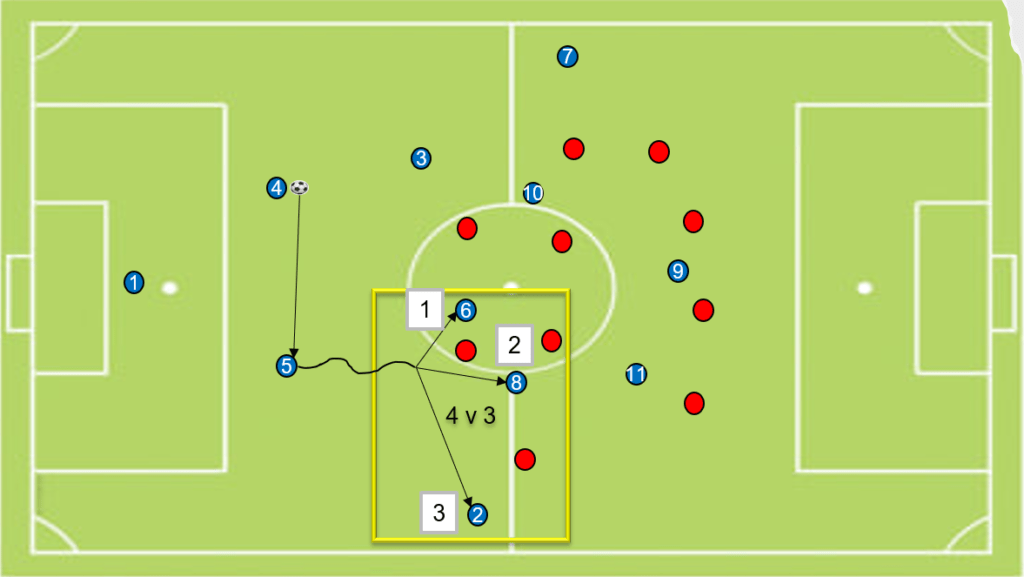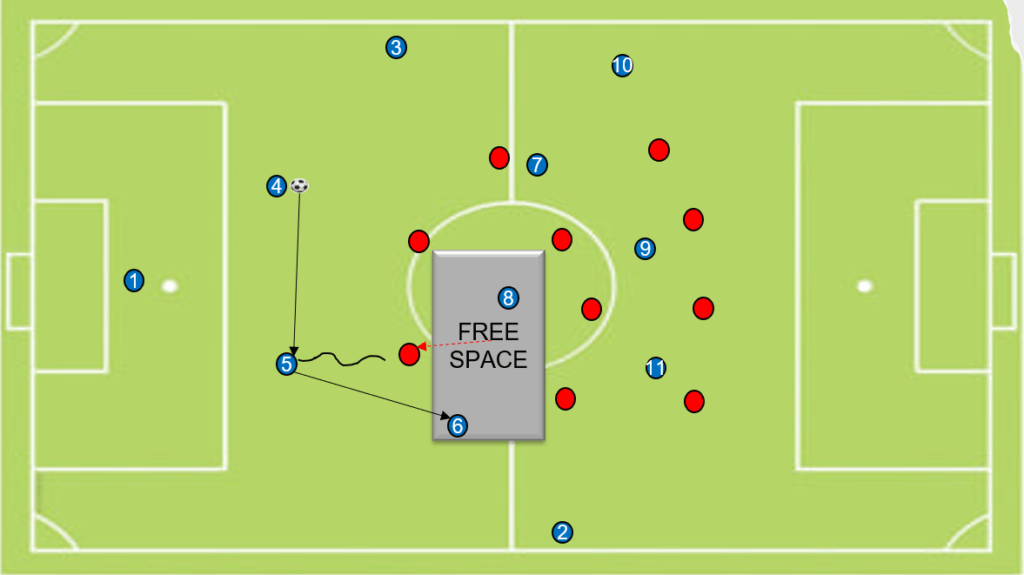In my previous article ” The 6 basic variables of Positional Play football” I presented the aspects of Positional Play style in football that a coach can vary based on his philosophy. In this article, I will try to mention the most important variables that are non-negotiable for every coach who wants to implement this specific football methodology.
The below non-variables are aspects of the methodology that all coaches must follow in order to successfully implement a Positional Play style.
Before or after reading the below, you can also read a more detailed article on Positional Play.
1. All interpretations of the Positional Play style must possess the foundations of a possession based-control game
There are different ways to control a game and establish dominance. The Positional Play style is heavily based on ball possession to control the tempo of the game, the space, and the opponent’s behavior. The importance of ball possession is to have clear tactical intentions and having as the objective to disorganize the opponent’s line to move forward.
Of course, there is a way to use the Positional Play in a similar form without necessarily having more possession than the opponent but it will require much more space awareness and effort from the players to work without the ball and usually in counter attacks. This happens rarely.
Below is a possession game leading to a finishing situation. This is an example of how possession can create opportunities to progress forward with better chances.
2. Width during the attacking phase
When a team who wants to implement a Positional Play football has the ball, the primary objective is to make the pitch as wide as possible. This will have as result to stretch the opposition and offer space coverage in a wide variety of ways.
3. Creating numerical and positional superiorities in key areas in defense and attack
This may actually result in players condensing space and then becoming more opportunistic with their movements. The Positional Play football teams should always look to have a +1 player at least near the ball either in the defensive or attacking phase.
The numerical superiority around the ball when in possession will offer more passing options and create free supporting players. The progression of the ball will be much easier and in case of loss of possession, the counter press is much more efficient.

When in defense, the +1 player will offer the necessary defensive cover needed to protect dangerous areas, like the central axis. The aim is to outnumber the attackers and make the pitch as small as possible for the opposition to play through.
This can be achieved through understanding the narrowing of angles, collaborative pressing, and compacting a defensive line. In general, the closer the play is to your own goal, the tighter the marking of key spaces should be.
With the term “Positional Superiorities” we want to highlight the advantage a team has when a player holds a specific position on the pitch. The most used example is the position of the players in half spaces and between the opponent’s midfield and defensive lines. When a winger or advanced midfielder positions himself in that space and the winger keeps the width then the opponent’s full back has to take a decision. Stay with the inside forward leaving the wide space free for the winger or take a more wide position leaving the inside free.
Check below how Pep Guardiola uses the half spaces to create positional superiorities for his team.
4. Importance of space and time in positional play style
The understanding of space and time by the players during the game is one of the most important aspects of the Positional play style. The players should constantly be scanning the pitch and looking for free spaces, free teammates, where the space is much more crowded, etc.
For example, if a player has two opponents marking him, that means that one of his teammates somewhere on the pitch is totally free.
Another example is the central defender who has space in front of him and time to drive forward with the ball . The intention is to force one opponent to jump forward, leaving free space behind for one of his teammates to position free. Then at the correct time, the center back will release a diagonal or vertical pass to the free teammate.

5. The playing identity should be the team’s deep-rooted culture and regardless opponent should always appear
The philosophy has evolved so that players are to be educated into making their own informed decision on the pitch and out of it but within a unified framework and game model.
6. The players must train as they aim to play
Through specific training methodology, drills, and games such as positional games, possession games, and passing drills, the coach aims to create the appropriate environment for the payers to gain match-related experiences. The intensity of the training sessions should always be similar to the game. Even on a recovery day and the activation day before a game, the concentration intensity should be high.
7. Development is always a slow and complex process
Due to the complexity of the Positional play style, the development of the game plan requires lots of time, and continuous effort and all the details must be explained to the players to be fully understood. The way to do it is usually through a simple set of instructions and guided coaching.
The development should occur through a holistic approach to development.
Conclusion
Positional Play style has so many parameters, variables, and theories and for that reason, only a few coaches in the world can implement it. A coach should know which variables can amend and which should stay untouched.
Each coach can interpret the different aspects of the philosophy based on his/her own experience and beliefs but the variables mentioned in this article should appear in the team’s behavior.

